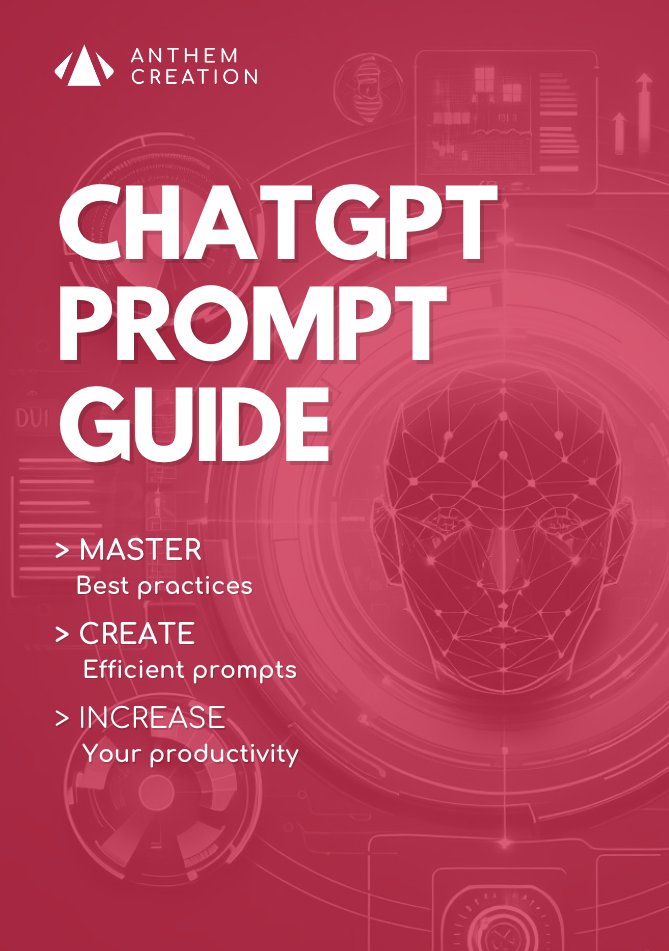Google search as we know it is undergoing its most significant transformation since its creation. With the launch of Google AI Mode, we’re witnessing a major upheaval in the way we interact with the world’s most-used search engine.
This new feature is much more than a simple update: it’s a complete reinvention of the search experience.
What exactly does Google AI Mode look like?
Imagine asking Google a question and receiving not a list of links, but a direct, detailed, and personalized answer. That’s exactly what Google AI Mode aims to deliver.
This new interface, accessible through a dedicated tab in the search bar, transforms Google into a high-performance conversational assistant.
“Google AI Mode is a total reinvention of search, not simply an AI layer added to what already exists,” Sundar Pichai explained at the official launch.
This feature is powered by Gemini 2.5, the artificial intelligence model developed by Google. Unlike traditional searches, AI Mode understands complex questions, breaks them down into sub-queries, and draws from countless sources to generate an immediate, synthesized response.
Transparency is not ignored: for every answer, AI Mode specifies how many searches were performed and how many sites were analyzed, reassuring users as to the reliability of the information provided.
New AI-Powered Search Features
Natural conversation with the search engine
The days of fully rephrasing every new search query are over. With AI Mode, users can progressively refine their requests with follow-up questions, just like in a human conversation.
If the first answer isn’t fully satisfactory, a simple “Can you elaborate on this?” or “What about…?” is enough to get further details.
Multifaceted analysis of your queries
The technology called “query fan-out” is a key advancement.
It allows the AI to simultaneously analyze different facets of a single question, resulting in more complete and nuanced answers.
Take an example like “best destination for a family vacation”: AI Mode will automatically consider factors such as budget, kid-friendly activities, safety, accessibility, and the ideal season—without you having to specify each criterion.
Integration with your Google universe
One of the most powerful (and potentially controversial) innovations is AI Mode’s ability to draw on your own Google apps—such as Gmail, Calendar, or Maps—for personalized answers.
For example, if you ask “Where should I eat tonight?”, the system could take into account your appointments in Google Calendar, your current location in Maps, and even your culinary preferences mentioned in your emails. This feature can be enabled or disabled according to your privacy preferences.
Visible sources and increased transparency
Unlike some AI assistants that work as “black boxes,” AI Mode goes for transparency. If the system isn’t confident enough in its answer, it clearly displays the sources checked and provides links to the original websites.
How to activate Google AI Mode?
At the moment, AI Mode is rolling out gradually in the United States. For early access, American users can sign up via Search Labs, Google’s experimental platform.
Once activated, a new “AI” tab appears in the standard search interface, allowing users to easily switch between classic search and the AI Mode experience.
Global rollout should take several months, with language and cultural adaptations for each region.
AI Mode in Practice: Where Does It Really Shine?
Google AI Mode particularly excels in scenarios where traditional search has struggled until now:
- Complex, multi-factor questions: “What team sport should I start at 40 when I have knee problems and little free time?”
- Planning and organization: “How do I plan a 5-day road trip in Brittany with 4- and 7-year-old children?”
- Nuanced comparisons: “Differences between learning piano and guitar as an adult beginner”
- Personalized recommendations: “What books should I read after enjoying ‘The Name of the Wind’ and ‘La Horde du Contrevent’?”
For requests like these, Google’s generative search experience (SGE) saves considerable time compared to the multiple, successive searches previously required.
AI Mode vs AI Overviews: Don’t Confuse Them!
It’s important to distinguish AI Mode from the AI Overviews feature, which Google launched several months ago:
| Feature | AI Overviews | AI Mode |
|---|---|---|
| Presentation | Summary box at the top of classic results | Dedicated conversational interface |
| Depth | Superficial overview | In-depth, multi-faceted analysis |
| Interactivity | No conversational follow-up | Multi-turn dialogue possible |
| Personalization | Limited | Potentially linked to your Google data |
| Integration | Coexists with classic search results | Distinct, immersive experience |
The Economy Behind AI Mode: Advertising and Monetization
Google hasn’t hidden its intent to integrate advertising directly into AI Mode. These contextual ads will appear either within the generated answers or immediately alongside them.
For advertisers and SEO specialists, this marks a new chapter. Websites will not only need to rank well, but must also structure content so it’s easily “digestible” by Google’s AI.
Information about Search GPT and the revolution in online search has become essential for digital marketing professionals to master.
Current Limitations: When AI Mode Shows Its Weaknesses
Despite its remarkable capabilities, Google AI Mode is not infallible:
- Hallucinations and inaccuracies: Like any generative AI system, it may sometimes “make up” information or misinterpret certain data.
- Potential biases: Responses inevitably reflect biases present in training data and the sources consulted.
- Limited understanding of nuance: Cultural subtleties, irony, or implicit context can still be missed.
- Outdated information: For very recent topics or those that rapidly evolve, the information could be outdated.
During early testing, users reported answers that were sometimes too simplistic for complex topics, or questionable recommendations in specialized fields such as health or finance.
Impact on the Web Ecosystem: Content Creators, Take Note!
For website publishers and content creators, the arrival of AI Mode has raised legitimate concerns. If Google answers users’ questions directly, what will happen to traffic directed to source sites?
Google claims it wants to maintain a healthy web ecosystem by systematically citing sources and encouraging users to delve deeper with provided links. But the reality may be more nuanced.
Superficial, redundant, or purely factual content risks seeing its traffic collapse. Conversely, content offering:
- Deep expertise
- Original analysis
- Personal testimonials
- Exclusive data
- Unique perspectives
…could continue to attract visitors and even gain visibility if the AI identifies them as reliable sources.
This transition is pushing the entire sector to rethink web content creation for the age of AI. The ChatGPT Search model was actually one of the first to explore this new frontier between traditional search and conversational AI.
Toward Truly Intelligent Search—Or the End of SERP Exploration?
The efficiency of AI Mode raises an intriguing question: by receiving direct, synthesized answers, are we losing serendipity? The unexpected discoveries that occur when freely browsing from site to site.
Exploring traditional results pages exposes us to diverse—even contradictory—perspectives that nurture critical thinking.
No matter how sophisticated, algorithmic synthesis risks homogenizing the way we consume information.
Google appears aware of this risk and is working on features that make it easy to explore alternative viewpoints or thematic deep-dives from AI Mode answers.
FAQ
How do I enable Google AI Mode on my phone or computer?
For now, Google AI Mode is rolling out in the United States only. Interested users can sign up via Search Labs, Google’s experimental platform. Once approved, a new “AI” tab will appear in the search interface. International rollout is planned for the coming months, with priority given to English-speaking countries.
Is Google AI Mode free or paid?
As of today, Google AI Mode is completely free. Google has not announced plans for a premium version, preferring to monetize via ads integrated into results. However, some advanced features may be reserved for Google One subscribers in the future.
Does Google AI Mode fully replace classic search?
No, Google is maintaining both experiences side by side. AI Mode exists as a separate tab, allowing users to choose between classic search (link lists) and the conversational AI experience based on their needs.
Are my searches in Google AI Mode private?
Google applies its standard privacy policy to AI Mode. Queries are logged and used to improve the service, just like with classic search. The “Web & App Activity” option in your Google account lets you manage or delete your history. For maximum privacy, it is recommended to use private browsing.
Does Google AI Mode work offline?
No, unlike some built-in AI features on smartphones, Google AI Mode requires an active internet connection because it relies on Google’s cloud servers to generate responses.
How do I know if the information provided by AI Mode is reliable?
Google AI Mode systematically indicates its sources and the number of sites consulted for each answer. For sensitive or controversial topics, it often presents multiple perspectives. When in doubt, click on the source links to check information in its original context.
Are my personal data from Gmail and Google Calendar used by AI Mode?
Integration with your personal Google data is optional. On first use, Google will explicitly ask for permission to access this information in order to personalize answers. You can enable or disable this feature at any time.
Will web content creators be compensated when AI Mode uses their information?
Currently, Google doesn’t plan direct compensation for sites cited as sources. However, the company puts forward its citation and linking system, which should help maintain traffic to originating sites. This remains controversial and could change under pressure from publishers.
Does AI Mode work in all languages?
At launch, AI Mode is optimized for English. Support for other major languages (French, Spanish, German, Japanese) is planned for 6–12 months following the US launch. Less common languages will be gradually added.
How does Google combat biases in AI Mode responses?
Google has implemented several mechanisms: diversifying consulted sources, cross-verifying information, human evaluation of answers on sensitive topics, and continuous learning from user feedback. Despite these efforts, no AI system is completely bias-free, and Google encourages users to report any problematic content.
AI NEWSLETTER
Stay on top of AI with our Newsletter
Every month, AI news and our latest articles, delivered straight to your inbox.

CHATGPT prompt guide (EDITION 2024)
Download our free PDF guide to crafting effective prompts with ChatGPT.
Designed for beginners, it provides you with the knowledge needed to structure your prompts and boost your productivity
With this ebook, you will:
✔ Master Best Practices
Understand how to structure your queries to get clear and precise answers.
✔ Create Effective Prompts
The rules for formulating your questions to receive the best possible responses.
✔ Boost Your Productivity
Simplify your daily tasks by leveraging ChatGPT’s features.
Similar posts
Deep Research : Perplexity, OpenAI, Gemini – Who’s the best?
After searchGPT OpenAI broke new ground with the Deep Research feature, which stands out for its ability to perform deep, exhaustive searches in record time. This functionality has also been …
Google Search, SearchGPT, Perplexity.ai: Which is the best search engine?
Today, we’re off to discover these three search giants: Google Search, the must-have; Perplexity.ai, the AI search tool that relies on reliable and transparent sources; and the new SearchGPT, the …
Perplexity or SearchGPT: What will your AI search engine be in 2025?
The future of online search is bound to involve AI. Whether it’s Google, with the much-dreaded SGE update; Perplexity AI, which is already validating the value of generative AI-assisted search; …


